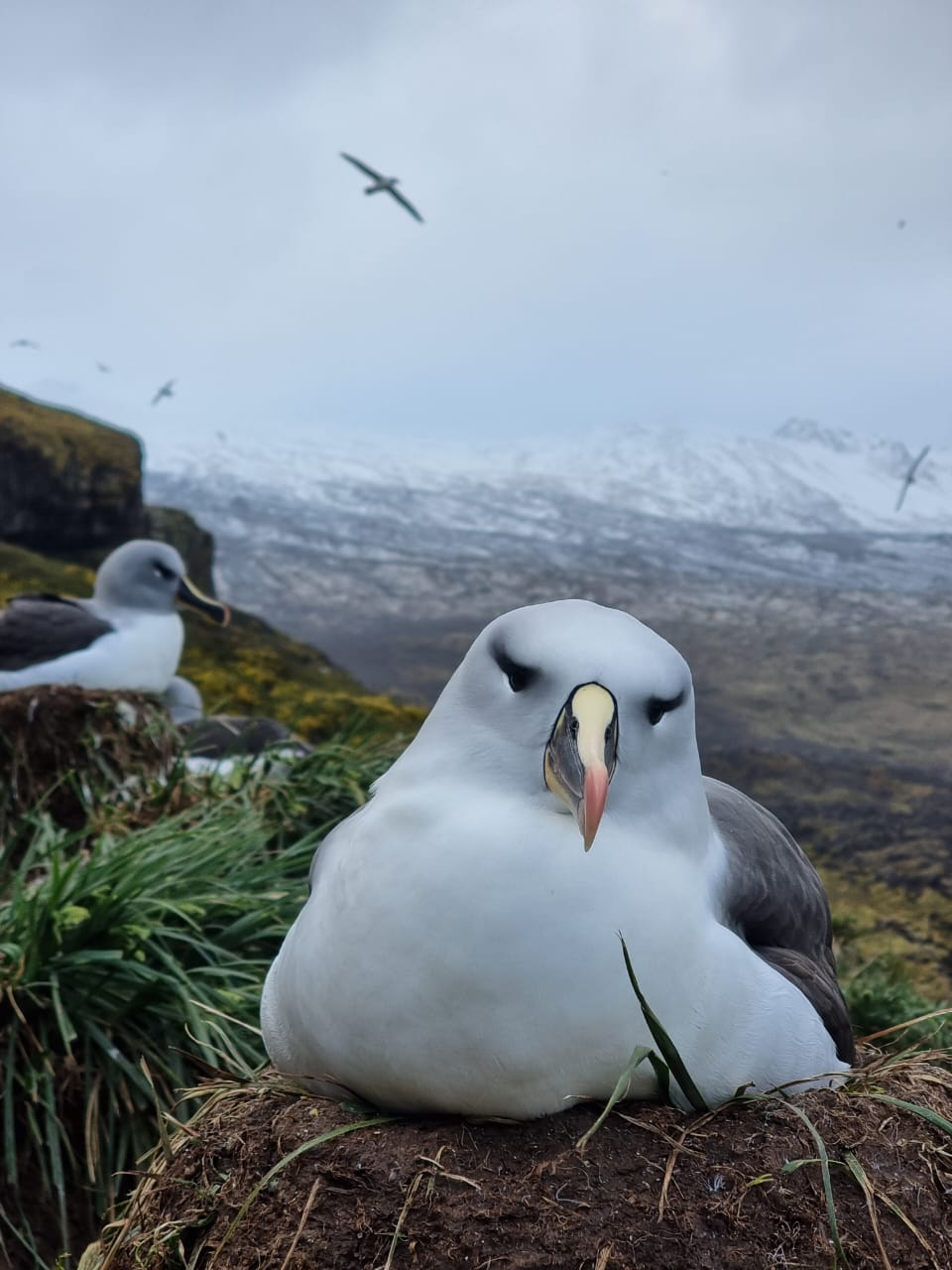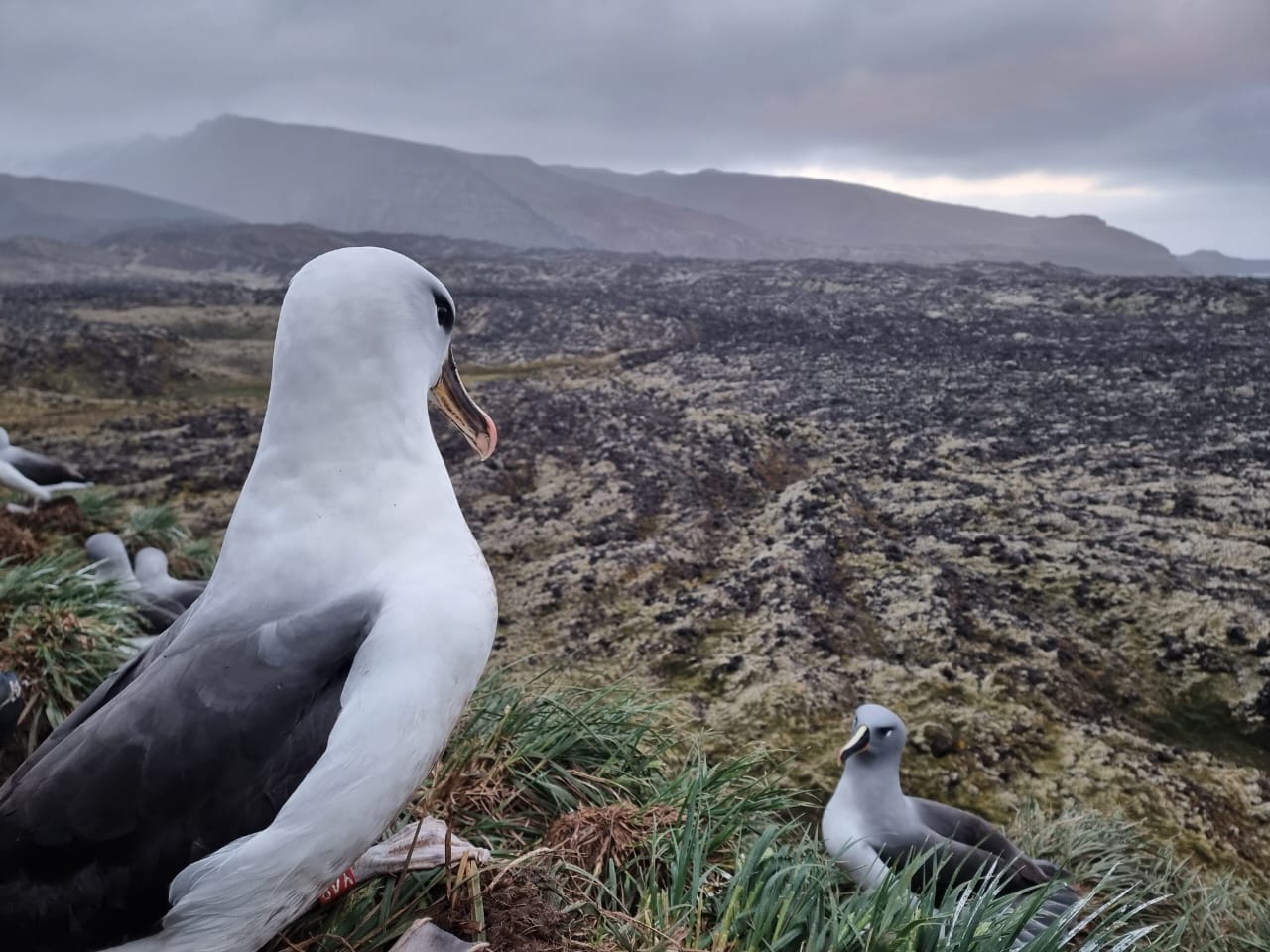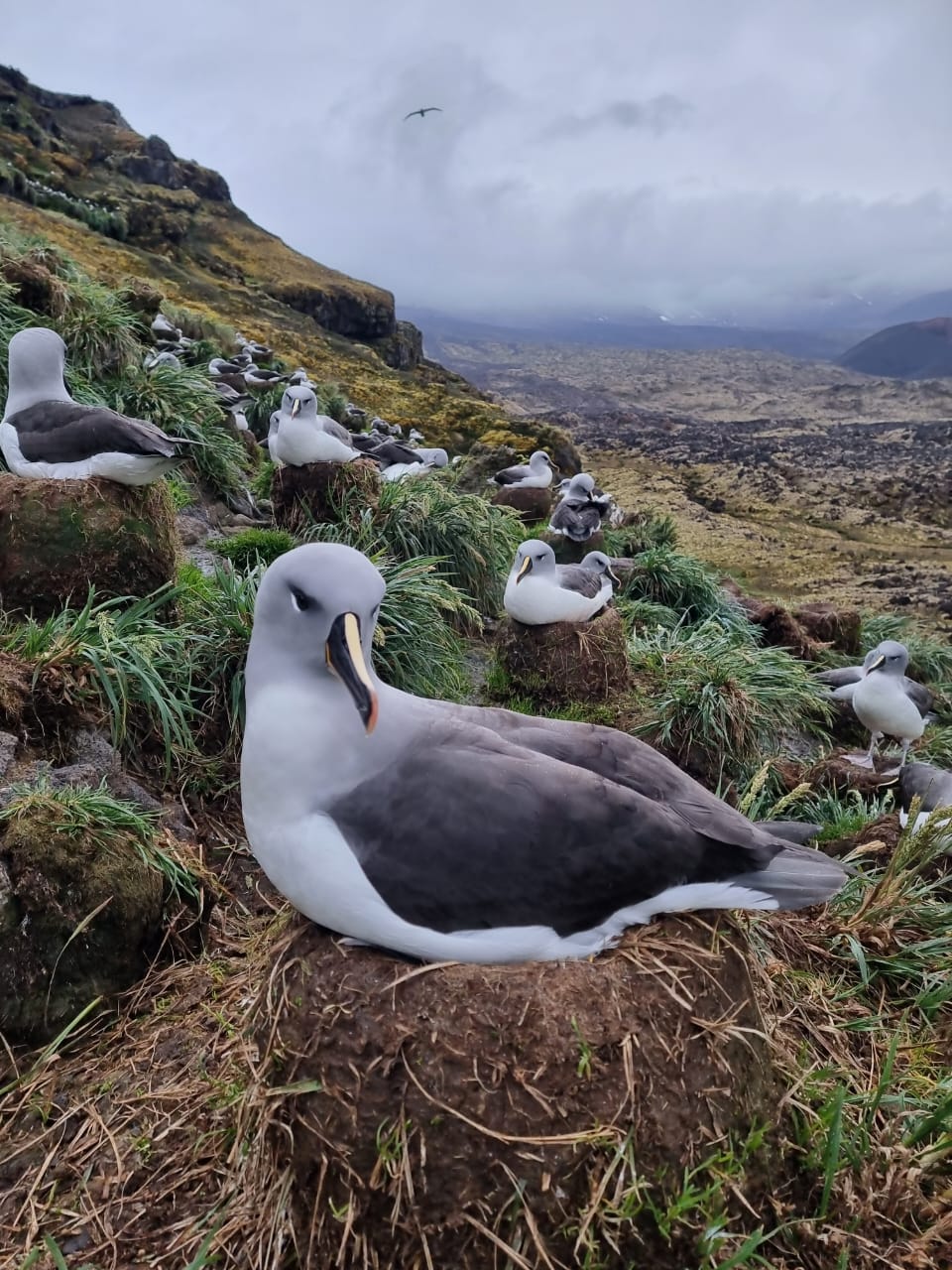
Hybrid Black-browed-Grey-Headed Albatross Red Y48 incubating an egg, Grey-headed Albatross Ridge, Marion Island, 21 October 2023, photograph by Michelle Risi
UPDATE: On 07 December the next was empty, with the hybrid seen close by before it flew off. If seen again an attempt will be made to pluck a feather to assign gender.
A Black-browed Albatross Thalassarche melanophris - Grey-headed Albatross T. chrysostoma hybrid has been recorded incubating an egg on sub-Antarctic Marion Island in the southern Indian Ocean. One of two such hybrids known from the island (click here) the colour-banded bird (left leg red Y48, right leg metal SAFRING 9A-45744) was first observed occupying an empty nest during the current 2023/24 breeding season on 06 October 2023 on Grey-headed Albatross Ridge in the south of the island. On a second visit on 21 October the bird was seen to be incubating. This is the first record of a hybrid albatross breeding on Marion Island, and apparently the first definite breeding by a known hybrid Thalassarche albatross anywhere (click here). The bird’s partner is a Grey-headed Albatross (left leg red Y96, right leg metal SAFRING 9A-87577) seen on the nest prior to laying and subsequently photographed taking an incubation shift on 18 November. The hybrid and its partner’s genders are not known.

The hybrid bird on its empty nest on 06 October 2023. The red colour band on its left leg is partially visible, photograph by Michelle Risi
The hybrid is believed to have been metal banded on Grey-headed Albatross Ridge as a non-breeding bird in the 2008/09 breeding season. On 7 October 2019 the colour band was added by Stefan Schoombie. A publication in the journal Antarctic Science suggests that the bird may have fledged from the same Black-browed – Grey-headed Albatross mixed pair that successfully fledged a different hybrid bird in May 2007, that was subsequently seen (and described) back in the colony as a non-breeder nine years later in 2016. In February 2018 this known-age bird was photographed by Chris Jones occupying an empty nest. That the two hybrid records are not of the same individual is confirmed because the 2007 bird was metal banded on its left leg prior to fledging (as are all fledglings within monitoring colonies on Marion Island), whereas the breeding hybrid discussed here wears its metal band on its right leg (as a bird of unknown age).
Further visits will be made during the breeding season to the hybrid’s nest to ascertain if the egg hatches and was therefore fertile.

Grey-headed Albatross red Y96 incubating on 18 November 2023 (when it was banded) is the hybrid’s partner. Their nest is marked with a short section of a numbered PVC electrical conduit pole, photograph by Michelle Risi
Mixed species breeding pairs in the genus Thalassarche have been recorded producing fledglings between Black-browed and Campbell T. impavida Albatrosses on Campbell Island and between a Black-browed and a White-capped T. steadi Albatross on Bird Island in the South Atlantic. Hybrids from these two mixed pairs have not been recording breeding. Within the Diomedeidae, mixed pairs have produced hybrid young between Black-footed Phoebastria nigripes and Laysan P. immutabilis Albatrosses and between Northern Royal Diomedea sanfordi and Southern Royal D. epomophora Albatrosses. In contrast to these Thalassarche hybrids, both Phoebastria and Diomedea hybrids have been recording breeding.

Another view of red Y48 incubating in a colony of Grey-headed Albatrosses, photograph by Michelle Risi
With thanks to Maëlle Connan, Chris Jones, Richard Phillips, Stefan Schoombie and Kim Stevens.
Selected References:
Jones, M.G.W., Techow, N.M.S., Risi, M.M., Jones, C.W., Hagens, Q.A., Taylor, F. & Ryan, P.G. 2019. Hybridization and cuckoldry between black-browed and grey-headed albatrosses. Antarctic Science 32-10-14. (click here).
Moore, P.J., Taylor, G.A. & Amey, J.M. 1997. Interbreeding of Black-browed Albatross Diomedea m. melanophris and New Zealand Black-browed Albatross D. m. impavida on Campbell Island. Emu 97: 322-324.
Phillips, R.A., Cooper, J. & Burg, T.M. 2018. Breeding‐site vagrancy and hybridization in albatross. Ibis 160: 907-913. (click here).
Rutt, C. 2013. Hybridization of the black-footed and Laysan Albatrosses. Western Birds 44: 322-333. (click here).
John Cooper, Emeritus Information Officer, Agreement on the Conservation of Albatrosses and Petrels & Michelle Risi, Marine Apex Predator Research Unit, Nelson Mandela University, South Africa, 30 November 2023

 English
English  Français
Français  Español
Español